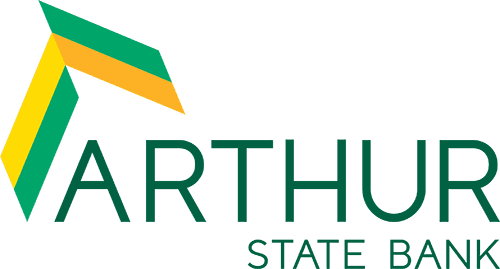For consumers who are new to online banking, security concerns are not especially uncommon. But there is good news for apprehensive account holders with questions such as “How secure is online banking?” and “How do banks address cyber security?” — the digital and physical protections that financial institutions put in place to protect customers’ sensitive data are extensive.
Just a few of the cutting-edge technologies that most banks employ to protect online accounts include:
- Highly advanced anti-virus and malware protection
- Firewalls that block unauthorized online traffic
- Secure Socket Layer (SSL) encryption to keep internet browsers’ connections secure
- Cookies that are used to identify familiar/trusted computers when they log in to online accounts
- Multi-factor authentication that employs two or three different unique identifiers — such as passwords, PINs, security questions, and randomized security codes that are texted or emailed to registered recipients — to help ensure that only authorized users are able to access online accounts
- Continuous account monitoring to help identify suspicious charges and prevent them from going through
Further, when customers bank with any institution that is a member of the FDIC (Federal Deposit Insurance Corporation), each of their personal accounts is insured for up to $250,000 — and the coverage is backed by the U.S. federal government.
9 ways to further boost your cybersecurity
Beyond the numerous protections listed above, consumers with online accounts can take some additional steps of their own to elevate the security of their online-banking assets. Consider these nine ways to protect your financial information when banking online:
- Keep devices and software up to date: Because software developers are constantly updating their offerings to protect against the latest security threats, it’s important to ensure that your devices’ security software, browsers and operating systems are running the most recent releases. Consider enabling automatic updates so that your devices get the most up-to-date protections as they become available.
- Use strong passwords: A super-simple password like “password” may be easy to remember, but it’s also easy for hackers and other cybercriminals to crack. Choose a password that:
– is at least eight characters in length and incorporates more than one word
– employs a mix of lowercase and uppercase letters
– includes special characters/symbols such as !, $ and ~
Further, avoid using the same password across different accounts, and change your passwords regularly. Some savvy consumers choose to use a password manager that remembers their passwords for them and facilitates the use of longer, stronger passwords.
- Be wary of phishing attempts: Phishing and smishing scams — which employ fake emails and texts often designed to look like they’re from legitimate organizations and institutions — are frequently used by cybercriminals in an effort to glean consumers’ personal and financial information. To help keep your personal information safe, learn to recognize the red flags of phishing and smishing, and always be on the lookout for them.
- Don’t share too much personal information publicly: When consumers put a lot of personal information out in the public domain, such as in posts on social media networks, hackers can use these details to make best guesses at their passwords, security questions, etc. To help limit the availability of this information to potential bad actors, users can adjust their privacy settings such that only trusted friends and followers can see certain (or any) posts. Further, it’s always a good idea to be skeptical of friend/follower requests from people you don’t know.
- Protect your connection: At home, consumers should always protect their Wi-Fi networks with a strong password to prevent unwanted/unauthorized access. And when using public Wi-Fi networks — especially for online-banking purposes — security experts advise that added precautions be taken to prevent unwanted monitoring or access via malicious hotspots, malware, spyware, man-in-the-middle attacks, etc. Taking steps such as disabling public file sharing, using a virtual private network (VPN), and turning off your device’s Wi-Fi and opting for your cellular connection instead can help limit risks.
- Confirm site security when shopping: Especially when providing financial details such as credit card numbers online, consumers should verify that the website they are using is employing an HTTPS (hypertext transfer protocol secure) connection. These connections add an extra layer of security by encrypting any data that is being sent or received. To confirm that this type of connection is being used, consumers can look for the “https” at the beginning of the web address they’re visiting, or they can look for a lock symbol in or around their internet browser’s address bar.
- Guard your cards: Consumers should be very careful about providing their debit card or credit card numbers to anyone over the phone, being sure to confirm that anyone who receives this information represents a reputable company/organization and is actually who they say they are. A good practice here is to refrain from giving these details to anyone who calls requesting them, instead opting to call an official phone number for the company/organization to provide payment details. Further, consumers should never share their debit card’s PIN number with anyone.
- Enable multi-factor authentication: By adding an extra layer of protection, multi-factor authentication makes it much harder for cybercriminals to use stolen and/or guessed usernames and/or passwords to log in to consumers’ banking and other personal accounts. It accomplishes this by employing such tactics as asking security questions before access is allowed, or sending a required and random access code to users’ email addresses or phones before they can log in. For users whose financial institution offers this option, signing up for multi-factor authentication can significantly ramp up their security protections.
- Set up account alerts: To keep customers well informed and up to date regarding the status and use of their accounts, many banks will deliver banking and/or fraud alerts that inform users when specific activities related to their account are detected. These can be delivered via text, email or push notifications from a banking app, and they can alert consumers to various activities (typically specified by the user during setup) such as failed login attempts, password updates, credit and debit card transactions, wire transfers, and the addition of new payees to an account’s online bill pay functionality. By setting up these alerts, consumers can greatly increase their account awareness and better monitor their accounts for fraud — in real time.
Proudly serving South Carolina since 1933, Arthur State Bank offers accounts and services to meet a variety of financial needs. To help you achieve all your financial goals, the bank offers in-person service as well as a range of convenient digital solutions. To learn how Arthur State Bank can help you with banking needs ranging from checking and savings to retirement accounts, mortgages, other personal loans and more, visit arthurstatebank.com.






















